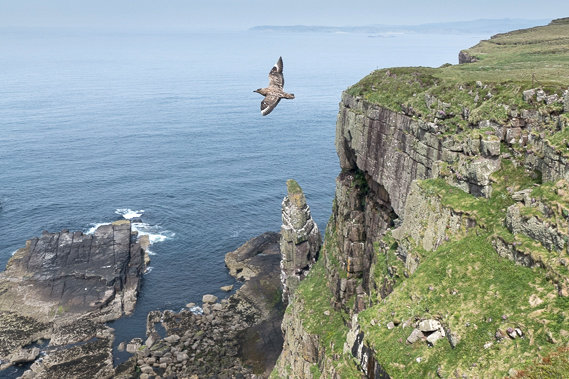
Handa is an island that simply tugs you back. It has it all; a wonderful evocative sense of loneliness (no Skomer hoards here – although it is still possible to get a quiet spot if you walk in the opposite direction to the Wick); a chance to get close to the ‘pirates’ of the bird world; archaeology and ancient history and a landscape of low coastal reefs to seriously imposing 100 metre Torridonian sandstone cliffs.
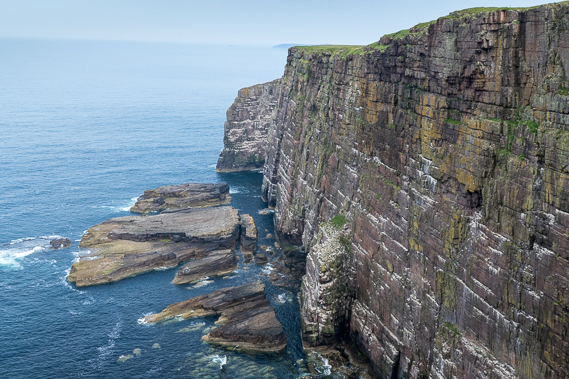
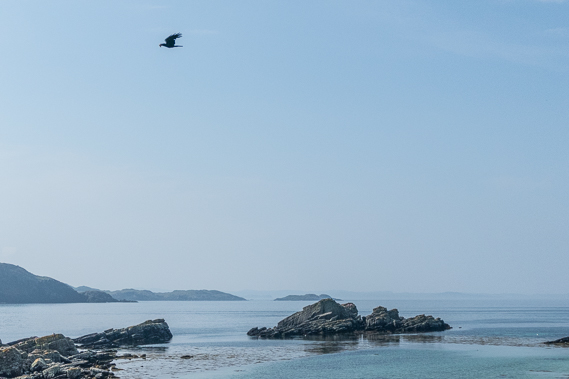
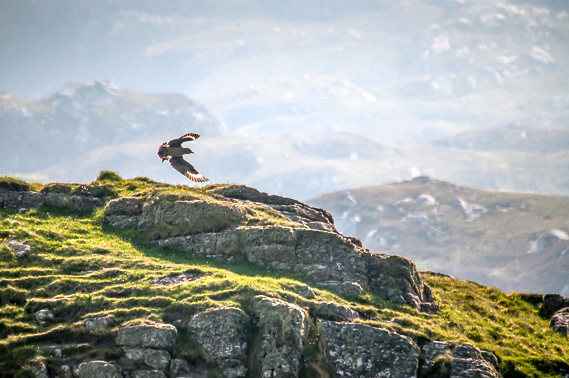
This was my fifth visit over the years and never has it failed to deliver. It’s owned by the Scourie Estate and leased to the Scottish Wildlife Trust and is both an SSSI and SPA. It’s situated on the extreme north west coast of Scotland and is reached by a small boat from Scourie
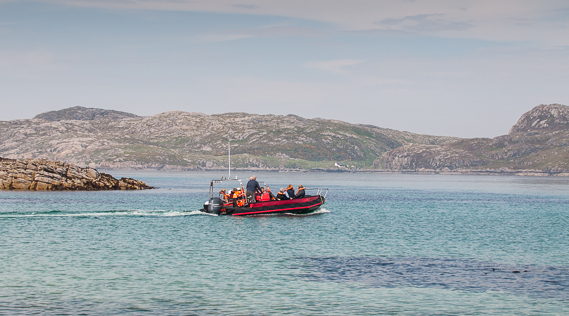
Last time we were on the island it had rained consistently for two weeks and with heavy seas we had to wait a few days before we were able to sail. It still rained but just to be there was enough. This time we’d hit a dry spell and although a little hazy, was warm, and the beach that you sail onto (no jetty here) had overtones of a tropical nature.
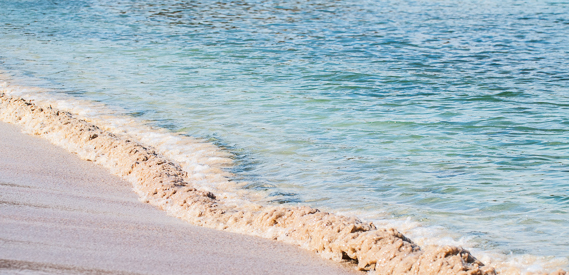
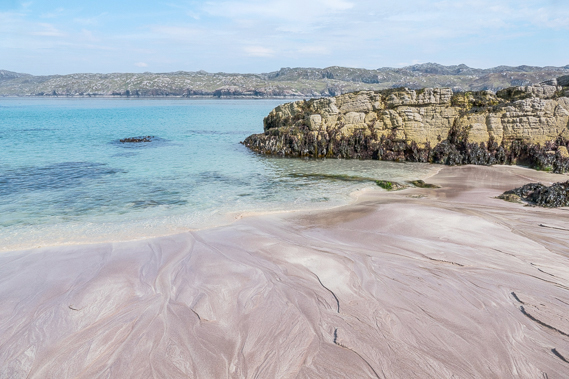
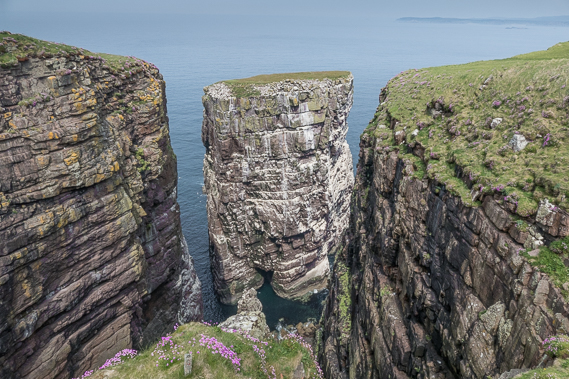
As ever we were first on the slipway at Tarbet, as you can’t book. To ensure the longest possible time on the island an early start is needed, so first on and last off is our moto!
There’s no better place to get close to both the Great and Arctic Skuas, the pirates of the bird world. Both will harry other birds into dropping their catch and are persistent in their pursuit.
As with much of the seabird population in Scotland though the same story is to be found on Handa; seabirds are in trouble. I spent some time talking to a researcher who was monitoring productivity of Guillemot’s eggs. Using a telescope perched precariously on the edge of one of the cliffs he was trying to identify which birds had laid the one egg (they only lay the one) in a designated area (defined by photographic prints). He would then return to see how many birds hatched and then fledged. By scaling up it is possible to estimate (fairly accurately) the success or otherwise of which ever seabird is being studied.
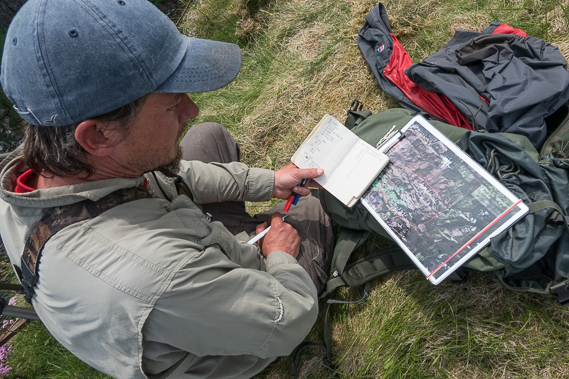
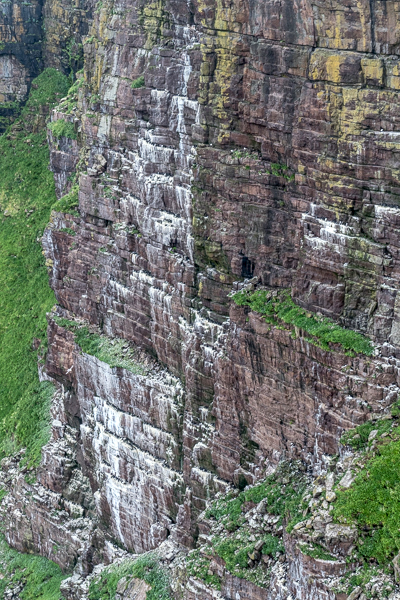
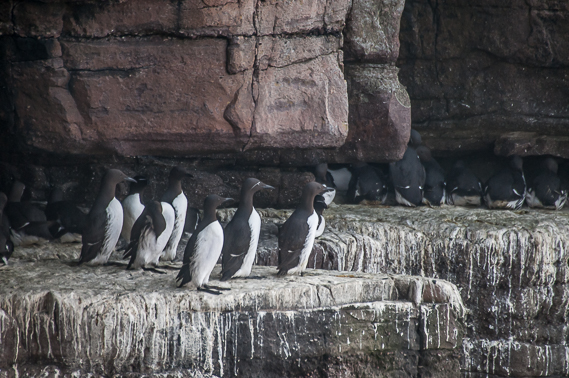
He was saying that in 15 years there had been about a 50% reduction in the number of nesting seabirds on Handa and the productivity (a percentage of how many birds fledge against how many eggs were laid) was falling. My first visit was in the early seventies and when I visited with my brother 15 or so years back I remember more noise, smell and birds. We are losing our seabirds for a variety of reasons, none more critical than the sea’s warming south of Iceland and the effect that has on the plankton at the base of the food pyramid. As Adam Nicholson succinctly puts it in the last chapter of his superb book, ‘The Seabirds Cry’
It is a straightforward cascade; warm sea, thin new species of plankton, thin or absent sandeels, voracious mackerel, hungry seabird, dead chicks.
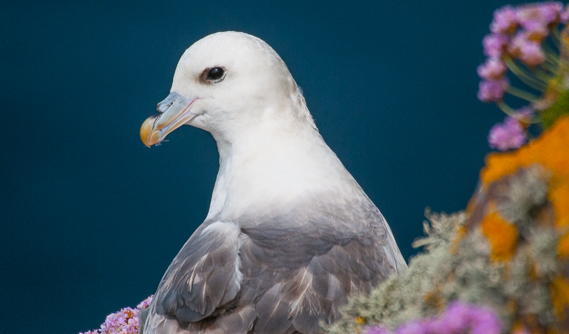
Other reasons are; over fishing; by catch of birds and deliberate killing; introduction of unwanted predators; pollution and plastics; human development and the destruction of nesting sites.
He further goes on to say,
Over the last sixty years, the world population of seabirds has dropped by over two-thirds. One-third of all seabird species is now threatened with extinction. Half of them are known or thought to be in decline.
It doesn’t make easy reading.
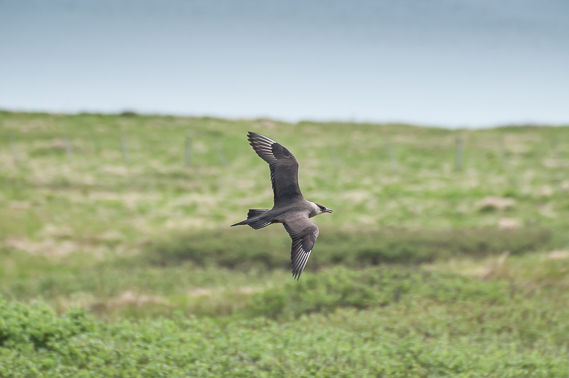
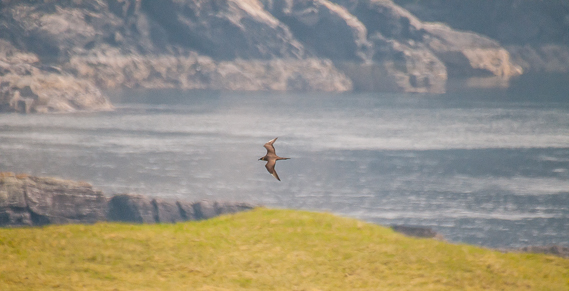
The two Skua species found on Handa have different stories to tell. The Great Skua, or Bonxie, is increasing here (though not across the whole of Scotland) and with Scotland home to about 50% of the world’s population it’s obvious the importance of protecting its habitat. On Handa, locally, it can become a problem as it patrols the cliffs ready for a chance grab of a seabird chick.
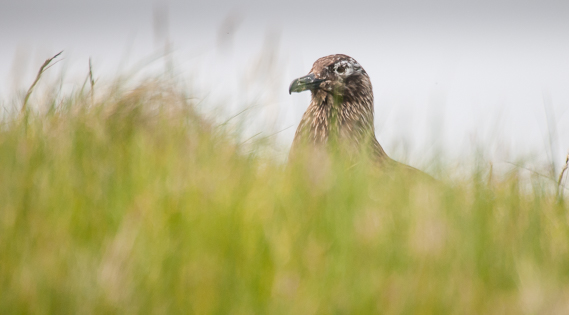
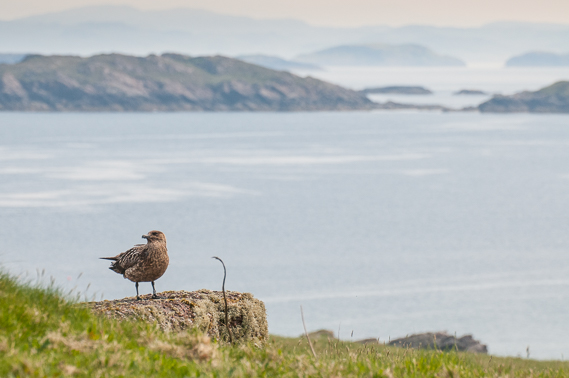
The Arctic Skua is in a rapid decline and may need supplementary food where it breeds with the Bonxies (or management of the Bonxies may need to be considered at some sites). Once again the decline can be attributed to a changing food web in our oceans along with the similar threats mentioned earlier.
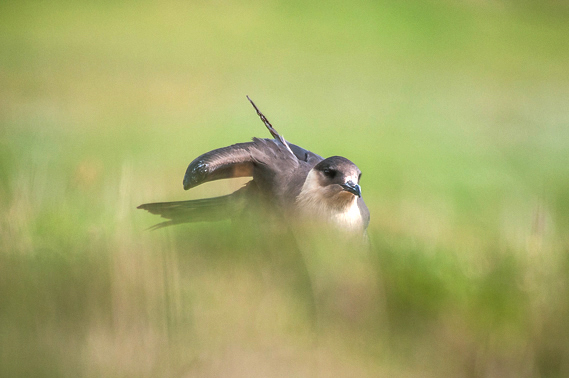
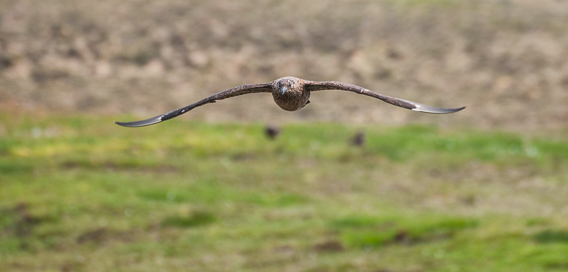
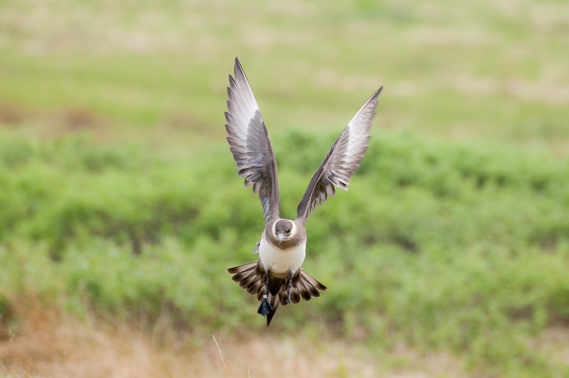
Handa on our visit, however, still left us wanting more. The time flew, we saw all the expected birds (although the Puffins were not easy this time) and had very close encounters with the Skuas. Red- throated Divers patrolled the sound between Tarbet and the island, Arctic Terns screamed and harried the Skuas and Eiders loafed just off land. On the island Skylarks accompanied us over the interior and Wheatears flashed white on the rocks. One unfortunate Eider chick had got separated from its parents and despite efforts to return it to the water it insisted on returning to the open beach. Once we left it would be at the mercy of the pirates of Handa.
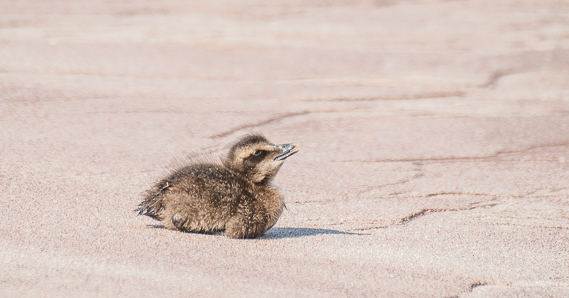
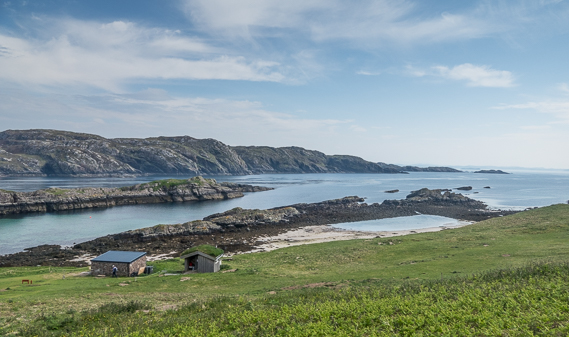
It all looked good, but underneath we had an uncomfortable feeling that when our kids visit at the same age as us now, there may not be much left and the photographs that I’ve taken may be their only link to such places as Handa. It’s a sobering thought!

Fantastic article Tim. Much enjoyed and reminded me of my love affair with islands. Last one I visited was Coll back in late 60’s. It is very saddening to think of the decline of so many species.